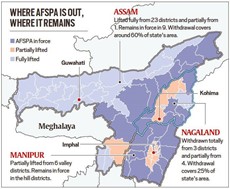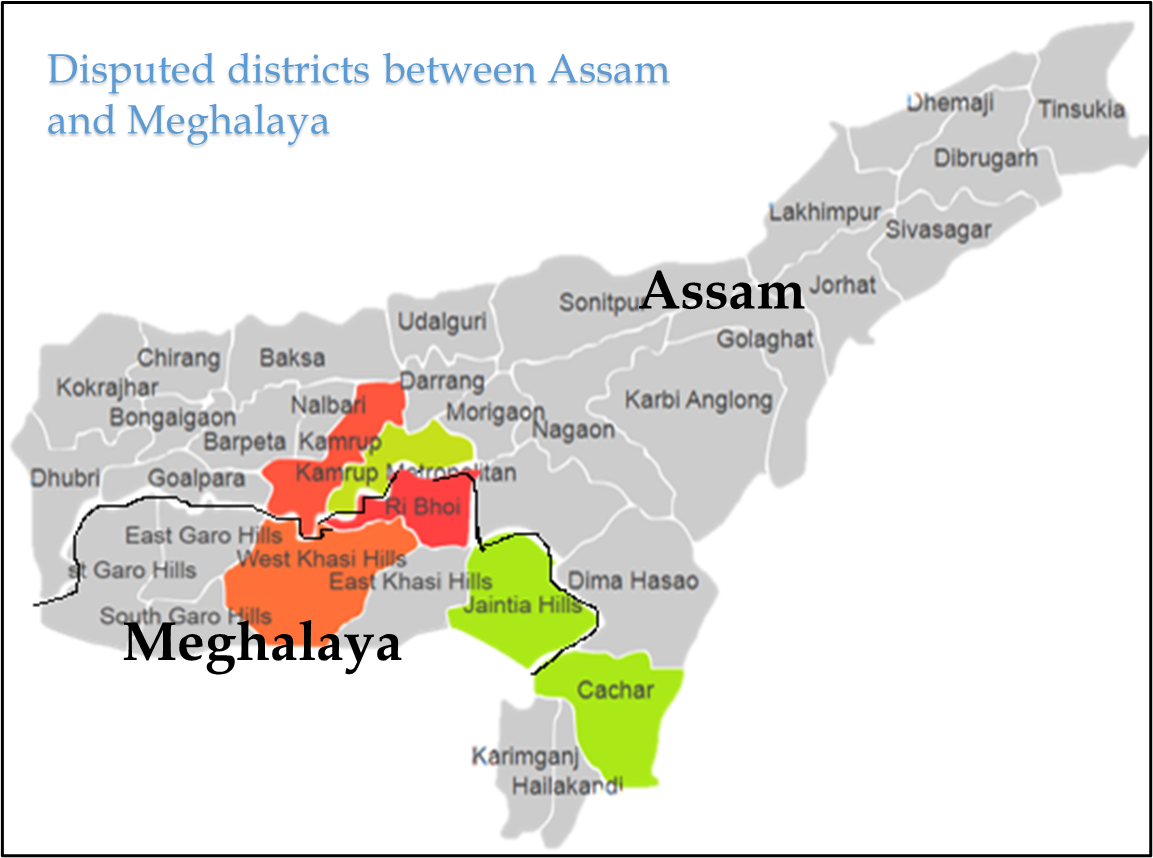Tuesday, 5th April 2022
IPCC Report: Mitigation of Climate Change
In News: The Intergovernmental Panel on Climate Change (IPCC) has released a report, “Mitigation of Climate Change” based on the findings of Working Group III as a contribution to the IPCC’s Sixth Assessment Report (AR6).
Important findings
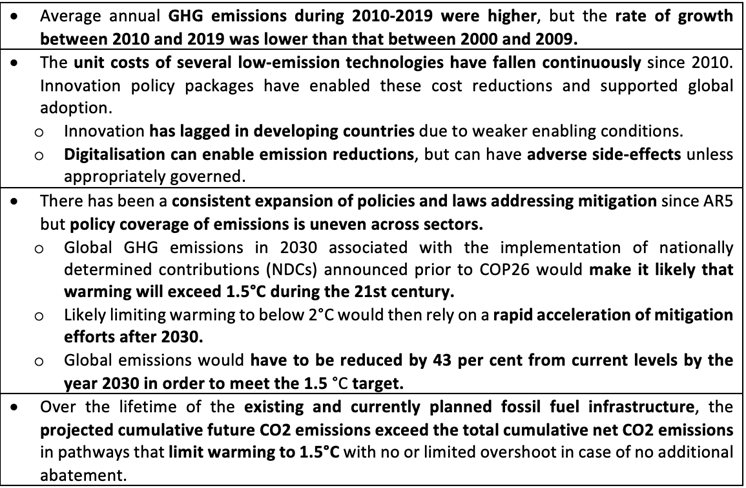
India related findings

System transformations to limit global warming:
- Global GHG emissions are projected to peak between 2020 and at the latest before 2025 in global modelled pathways that limit warming to 1.5°C C with no or limited overshoot, and those that limit warming to 2°C.
- Without a strengthening of policies beyond those that are implemented by the end of 2020 global warming of about 3.2°C by 2100 will be reached.
- All global modelled pathways involve rapid and deep and, in most cases, immediate GHG emission reductions in all sectors.
- Modelled mitigation strategies to achieve these reductions include transitioning from fossil fuels without carbon capture and storage (CCS) to very low- or zero-carbon energy sources, such as renewables or fossil fuels with CCS, demand side measures and improving efficiency, reducing non-CO2 emissions, and deploying carbon dioxide removal (CDR) methods to counterbalance residual GHG emissions.
- Urban areas can create opportunities to increase resource efficiency and significantly reduce GHG emissions.
- Demand-side options and low-GHG emissions technologies can reduce transport sector emissions in developed countries and limit emissions growth in developing countries.
- The deployment of carbon dioxide removal (CDR) to counterbalance hard-to-abate residual emissions is unavoidable if net zero CO2 or GHG emissions are to be achieved.
- The global economic benefit of limiting warming to 2°C is reported to exceed the cost of mitigation in most of the assessed literature.
Linkages between mitigation, adaptation, and sustainable development:
- There is a strong link between sustainable development, vulnerability and climate risks.
- Limited economic, social and institutional resources often result in high vulnerability and low adaptive capacity, especially in developing countries.
- The Sustainable Development Goals (SDGs) adopted under the UN 2030 Agenda for Sustainable Development can be used as a basis for evaluating climate action in the context of sustainable development.
Strengthening the response
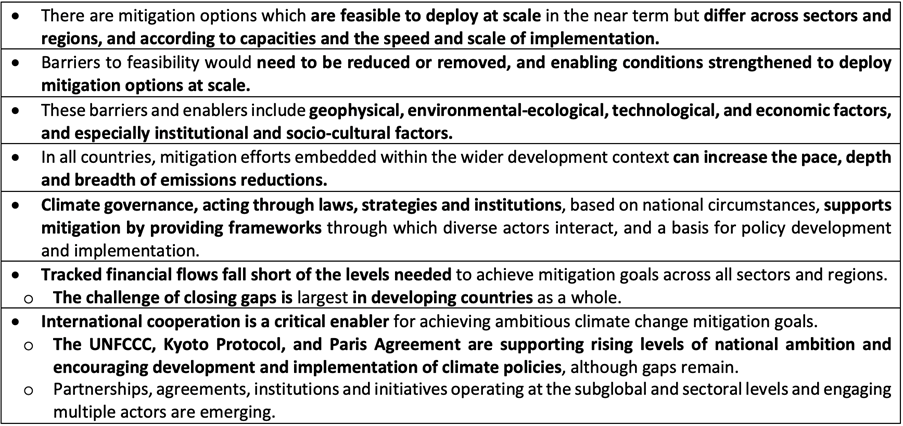
Sources:
CCI report on Unfair practices
In News
The director general (DG) of the Competition Commission of India (CCI) has recently submitted its report on Google’s Play Store billing policies.
About the News
- The report paves the way for the CCI to regulate how firms like Google LLC and Apple Inc. run their app stores.
- The DG investigates such matters by seeking information from competitors, customers and other stakeholders in the industry
- Previously, CCI has also started probe into Apple for abusing its dominant position in the apps market by forcing developers to use its proprietary in-app purchase system.
- Although the report in itself is not binding on the CCI, which can choose to rule against the report. However, the CCI ruling differs from what’s in the DG’s report only in the rarest of cases.
What are the major highlights of the CCI report?
- Unfair practices: The report highlighted that Google has been imposing an “unfair and discriminatory" conditions in violation of India’s regulations.
- Forced exclusion: It said the company’s conduct in India is leading to “denial of market access" to other apps that use the government’s unified payments interface (UPI) payments system.
What is the issue?
- Abuse of dominance: The complaint against Google is part of a global discourse against the rules enforced by the company on developers. It requires app makers to use its built-in payment systems to sell apps and services, and hence pay a fee to Google.
- Global issue: Since the case began, both Japan and South Korea have directed app store owners like Google and Apple to stop this practice. Competition regulators around the world, including the CCI, are expected to at least direct platform owners to stop forcing developers to use their own payment modes.
- Killing competition: Both companies have cut the fees they charge over the past two years. Apple has said it will allow third-party payments for so called “reader apps", while Google started testing third-party payments with music streaming firm Spotify last month.
- Market monopoly: A report by market research firm Sensor Tower in December 2021 said users spent $133 billion on apps last year, across Apple and Google’s stores.

What are the implications of the report?
- Review by CCI: The CCI will review the DG’s report and send it to the parties involved in the case for their comments who can challenge the report from the DG.
- Only recommendatory: In legal terms, the DG’s report is only a recommendation to the competition regulator and doesn’t automatically mean Google will be found guilty.
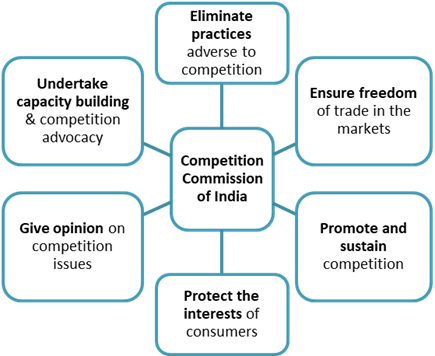
Sources:
WHO’s suspension of Covaxin
In News
World Health Organization (WHO) has recently suspended the supply of Covaxin through UN procurement agencies and has recommended to countries that have received the vaccine to take appropriate actions.
About the News
- Status thus far: Covaxin, India’s first indigenous vaccine for Covid-19, had got emergency use listing (EUL) from the WHO last year.
- This means that Covaxin had met the standards set by the WHO for protection against the coronavirus disease.
- The WHO’s EUL is a prerequisite for a vaccine to be part of supply under COVAX initiative and thus the licence paved the way for Bharat Biotech to supply Covaxin to UN agencies including through COVAX.
- However, at the time the EUL for Covaxin was granted, the WHO had not done any inspection.
- Inspection by WHO: The observation by WHO indicate that:
- Covaxin is effective and there is no safety concern.
- However, WHO has asked the company to address deficiencies in good manufacturing practice (GMP) which is basically upgradation and making specific changes in its manufacturing facilities for Covaxin.
- The necessary upgrades: When the company received emergency use authorisation from India’s drug regulator, it repurposed its existing facilities, some of which were used for producing vaccines for a polio, rabies and Japanese encephalitis vaccine.
- This indicates the absence of a specifically designed facility for Covid-19 vaccine production.
- Issues with Upgradation:
- Requirement of complete shutdown: When a facility needs to be upgraded for a specific vaccine, it has to completely shut down and given that the company is engaged in active production, it cannot undertake extensive maintenance and upgrade.
- Procurement of new equipment: During the peak of the pandemic, procurement and supply of new equipment required for an upgrade would have been both time consuming and not economical.
- 120 day manufacturing time: Since the manufacture of a batch of Covaxin takes 120 days from start to finish, shutting down and upgradation of the facility could have resulted in the loss of almost 6 months.
- Urgency to vaccinate the population: There was acute urgency to vaccinate the population, weighing the risk of which the company had chosen to start manufacturing Covaxin in a repurposed facility in a manner where the vaccine is safe.
- Process of Upgradation:
- The process of upgradation is complex.
- Some of the equipment has to be sourced from domestic suppliers and some to be imported.
- Once the upgrade is complete, the company has to receive fresh regulatory approval for commercial use of the facility.
- The Company/firm has to undergo the process of corrective and preventive action (CAPA) which are a set of actions or regulations required in manufacturing, documentation, procedures, or systems to rectify non-conformance. A report on CAPA has to be submitted to both the Indian regulator and the WHO.
- Audits and approvals are part of the regulatory mechanism.
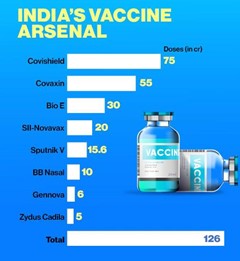
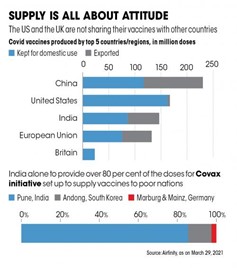
Source:
- Explained: Why WHO suspended Covaxin, and how Bharat Biotech is responding
- WHO suspends UN supply of Bharat Biotech's Covaxin vaccine for Covid-19
- WHO’s suspension of Covaxin supply won’t affect Bharat Biotech’s business, says official
Image source:
National Maritime Day
On April 5, 1964, National Maritime Day was celebrated for the first time in India. In 1919, it was on this day the first Indian commercial vessel had set sail from Mumbai to London — SS Loyalty, of Scindia Steam Navigation Company Ltd. This was also the first ever largest large scale shipping company which was entirely owned by Indians. And once the ship sailed, it was a historic moment for Indian Shipping as at that time the sea routes were under the control of the British. April 5, 1964, was identified to spread awareness about intercontinental commerce and economy globally. This day is dedicated to the importance of maritime trade in India, as it holds a very strategic location. According to the data of the Ministry of Ports, Shipping and Waterways, the country’s maritime trade is almost 95 percent and 70 percent by value. The theme of the National Maritime Day is “Sustainable Shipping beyond Covid-19’’.
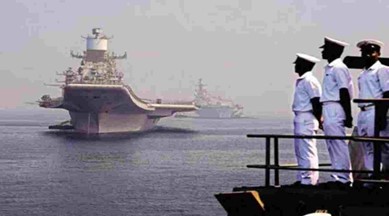
Source:
5th BIMSTEC Summit
In News
The 5th Summit of the Bay of Bengal Initiative for Multi-Sectoral Technical Economic Cooperation (BIMSTEC) was hosted by the Sri Lanka in Colombo in hybrid mode on 30th March 2022.
About the Summit
- The Summit was preceded by the 18th BIMSTEC Ministerial Meeting and the 22nd BIMSTEC Senior Officials’ Meeting.
- It was held under the theme “BIMSTEC – Towards a Resilient Region, Prosperous Economies, Healthy Peoples”.
- Sri Lanka is the current chair of the BIMSTEC. Thailand would be the next chair.
Key outcomes of the 5th BIMSTEC Summit
- Adoption of the BIMSTEC Charter, which formalizes the grouping into an international organization made up of member states that are littoral to, and dependent upon, the Bay of Bengal.
- Rationalized Areas of cooperation under BIMSTEC. The 14 areas of cooperation under BIMSTEC have been rationalized to 7 pillars of cooperation. Henceforth, each of the member countries will lead one pillar. India will lead the security pillar of the BIMSTEC.
- It also instructs the BIMSTEC Secretariat to develop Plans of Action in consultation with Lead Countries of the reconstituted Sectors and Sub-Sectors to guide their activities and to establish necessary institutional mechanisms to carry out their respective mandates.
- BIMSTEC Masterplan on Transport Connectivity: The adoption of the ‘Master Plan for Transport Connectivity’ lays out a guidance framework for connectivity related activities in the region in the future.
- Signing of the following legal instruments:
- BIMSTEC Convention on Mutual Legal Assistance in Criminal Matters.
- Memorandum of Understanding (MoU) on Mutual Cooperation between Diplomatic Academies/Training Institutions of BIMSTEC Member States.
- Memorandum of Association on Establishment of BIMSTEC Technology Transfer Facility in Colombo.
BIMSTEC : From Evolution to Growing Relevance
- BIMSTEC includes countries of the Bay of Bengal region, and seeks to act as a bridge between South and Southeast Asia. Originally formed as BIST-EC (Bangladesh, India, Sri Lanka, and Thailand Economic Cooperation) in 1997, it became BIMST-EC after Myanmar joined, and BIMSTEC in 2004 with the inclusion of Nepal and Bhutan.
- In the mid-2010s, BIMSTEC gained attention as India-Pakistan tensions began to hamstrung SAARC. Later in 2016, India held a joint BRICS-BIMSTEC Summit in Goa for the latter’s regional outreach. After this, the support for BIMSTEC gained further momentum.
- Some key agreements signed by BIMSTEC members include a convention for combating terrorism, transnational organised crime and illicit drug trafficking. However, this awaits ratification.
- Another is the BIMSTEC Grid Interconnection, signed during the 2018 BIMSTEC Summit, which aims to promote an optimal power transmission in the BIMSTEC region.
- In the current pandemic situation, BIMSTEC becomes the platform for stronger collective action among member states and assist the member countries to efficiently distribute the COVID-19 vaccines.
- The Bay of Bengal has grown in strategic significance within the Indo-Pacific, especially due to the contest between India and China. Hence, its littoral countries are keen to re-engage with one another. A natural platform to reinforce these ties and develop avenues of cooperation is the BIMSTEC — the regional organisation exclusive to the Bay.
- The reason small nations in the Bay of Bengal, Indian Ocean and Pacific Ocean are turning to regional blocs like BIMSTEC is because they gain higher economic dividends from regional blocks than fragmented multilateralism promoted by the World Trade Organization (WTO).
- Relevance for Member States - Win-win for nations
- Bangladesh views BIMSTEC as a platform to position itself as more than just a small state on the Bay of Bengal, and Sri Lanka sees it as an opportunity to connect with Southeast Asia and serve as the subcontinent’s hub for the wider Indo-Pacific region.
- Nepal and Bhutan aim to connect with the Bay of Bengal region and escape their landlocked geographic positions.
- For Myanmar and Thailand, connecting more deeply with India would allow them to access a rising consumer market and, at the same time, balance Beijing and develop an alternative to China’s massive inroads into Southeast Asia.
- For India, the region’s largest economy, a lot is at stake.
- Prime Minister has reiterated time and again that BIMSTEC not only connects South and Southeast Asia, but also the ecologies of the Great Himalayas and the Bay of Bengal. With shared values, histories, ways of life, and destinies that are interlinked, BIMSTEC represents a common space for peace and development.
- For India, it is a natural platform to fulfil its key foreign policy priorities of ‘Neighbourhood First’ and ‘Act East’.
The Growing Significance of BIMSTEC in India’s Foreign Policy
In this dynamic world, India has to foster a foreign policy which incorporates the smooth conduct of regional relationships through multilateral partnerships enabling mutual cooperation and growth. Being a prominent actor in South Asia and with SAARC proving to be insufficient, India is now eyeing towards BIMSTEC thereby striving to materialize its key foreign policy priorities.
Events signifying India’s shift from SAARC to BIMSTEC
- BIMSTEC revitalizes India’s regional cooperation in the Bay of Bengal region along with deepening its relations with ASEAN.
- Strategic shift from SAARC to BIMSTEC happened after the recent strains in the bilateral relations between India and Pakistan making India to look for a parallel platform devoid of Pakistan.
- The importance of maritime neighbourhood along with continental neighbours and India’s need to negate the Chinese influence further added to the shift in focus to BIMSTEC.
- In addition, the trade agreement like the SAARC Preferential Trade Agreement (SAAFTA) and other such initiatives of SAARC are not yet realized and there exits suspicion and disparity in the balance of power within SAARC leaving India to find an alternative in BIMSTEC.
- The invitation by the Prime Minister of India to BIMSTEC leaders for his second swearing in ceremony instead of SAARC leaders indicated the shift of India’s foreign policy towards east affirming the importance of India’s Neighbourhood First and Act East Policy in the coming years.
- The COVID-19 pandemic further increased the opportunity for India to collaborate with its neighbours rigorously providing a new dimension to foreign policy implementation and diplomacy.
For India, the strategic significance of BIMSTEC forms the crux of its foreign policy.
- The Bay of Bengal is the largest bay in the world which is strategically located linking the Indian Ocean and Pacific Ocean and acts as a connection to the Strait of Malacca.
- Carrying one fourth of the global trade, it becomes the access point to India for resources including energy source like natural gas reserves and securing this economically significant region is important for India to enlarge its export market.
- The significance of BIMSTEC is also due to its regional integration and maritime security factors where India can also realize its ‘blue economy’ ambitions.
- The organisation also enables connectivity and development projects of India like the SAGAR (Security and Growth for All in the Region) initiative which strengthens the economic, maritime and security cooperation through the sharing of information, surveillance measures and increased capabilities in the Indian Ocean region.
- The India- Myanmar-Thailand trilateral highway which is under talks to extend it further to Cambodia, Laos and Vietnam, the Kaladan Multi-Modal Transit Transport Corridor, and the Bangladesh-Bhutan-India-Nepal (BBIN) initiative are the focus areas of BIMSTEC.
- With China’s aggressive nature in various areas including the Belt and Road Initiative (BRI) through strategies like debt trap, BIMSTEC helps India in countering China multilaterally. This requires economic, political, security and maritime cooperation that is enabled through this organization.
- Development of Northeast Region: BIMSTEC connects India’s northeast with BIMSTEC countries and acts as a platform to realize India’s Neighbourhood First Policy and Act East Policy. The cooperation enables economic development in the region, removing its isolated nature and address the issues faced by the region and also provides better connectivity.
- The connectivity and mutual development in the region are also enhanced through cooperation in the maritime area by connecting inland waterways providing access to landlocked states, facilitating movements of resources and also ensures the security by integrating the coastal guards of the states concerned.
BIMSTEC: Challenges before India
- The impression of BIMSTEC being an India-dominated bloc and the overlap of countries and interests in both SAARC and BIMSTEC pose as a challenge to India-BIMSTEC cooperation. Meanwhile the dependency of BIMSTEC members on China hinders the complete realization of India’s national interest.
- The trump card used by Nepal as its position as a buffer state between India and China, make India go lenient towards Nepal. The withdrawal of Nepal from the BIMSTEC joint military exercise in 2018 proves this implying the disparity of interest among member states in the smooth conduct of the organization.
- Current geopolitical scenario will also be a challenge. The aggressiveness of China in the South China Sea and its assertive nature in Nepal along with China’s strong economic and military engagement with other South Asian nations other than India need to be accounted into for smooth functioning of BIMSTEC.
Conclusion: BIMSTEC is the only platform through which India can project and extract its interests in South Asia without a hindrance from Pakistan, also enabling India to counter the Chinese influence in its neighbourhood. To ensure the effective utilization of the potential of BIMSTEC, the organization has to prioritize the connectivity initiatives and has to open up to extend the cooperation via powers like Australia, Japan and United States.
Question: BIMSTEC is an important pillar in the South Asian geo-political order. Discuss the statement in the context of the 5th BIMSTEC summit.
Sources:
- Fifth BIMSTEC Summit Declaration, Colombo, Sri Lanka, 30 March 2022
- What is BIMSTEC, the Bay of Bengal grouping of nations?
- Explained | How has BIMSTEC finetuned its regional agenda?
- 5th BIMSTEC Summit
- Questions over stability of world order: PM Modi at BIMSTEC summit
- 5th BIMSTEC Summit
- Firming up Bimstec: Colombo summit is an important step for regional cooperation
- View: Time has come to realise the BIMSTEC dream
- Cohesion and co-operation: On power imbalances in BIMSTEC
- Bridging the bay in quest of a stronger BIMSTEC
- A subregional grouping that must get back on course
- India to lead security pillar of BIMSTEC; PM pitches for regional security
- BIMSTEC has to stir itself up
- The Growing Significance of BIMSTEC in India’s Foreign Policy
- Regional Geopolitics and the Role of BIMSTEC
- What is BIMSTEC & why it has emerged as the preferred grouping of countries in South Asia
- The Role of BIMSTEC in Revitalising India’s Northeast orfonline.org/research/the-role-of-bimstec-in-revitalising-indias-northeast/ India’s Paradigm Shift From Saarc To Bimstec
Receipt for an invisible artwork
This is image of a receipt for an invisible artwork by French artist Yves Klein, issued in 1959, is expected to fetch somewhere between 300,000 and 500,000 euros when it goes for auction in France. An important figure in post-war European art, Klein was a member of the Nouveau Réaliste movement that began in France in the 1950s. One of the pioneers of performance art, in 1958, Klein opened an exhibition called “The Void” at Galerie Iris Clert in Paris which saw him place a large cabinet in an empty room. The collectors were given an opportunity to purchase a work from the non-existent conceptual series in return for pure gold. They were also given a choice — either to keep their receipt or burn them in a ritual. For those who chose to burn them, Klein also dumped half of the gold he was paid for the work into the Seine River. Klein described the imaginary spaces as “Zones of Immaterial Pictorial Sensibility”.

Source:
“J form”
- Context: Punjab becomes the first state in the country to provide digitised “form J” in real time on the WhatsApp number of farmers from this Rabi procurement season.
- ‘J form’ is the sale receipt of a farmer’s agricultural produce in mandis (grain market).
- These forms were earlier issued manually by arthiyas (commission agents) because in Punjab, a majority of farmers sell their crops through such agents only.
- This form is also an income proof for a farmer who sells his crop.
- Before digitisation of the J form, several arhtiyas kept these forms with themselves, because of which many farmers ended up having no record of their income after selling their crops.
- Thus, by getting digitised J form, farmers will now have a clear record of the crop sold and income received with respect to that.
- These forms will be delivered directly on a farmer’s WhatsApp number immediately after a sale is confirmed on the system by the arthiyas and buyers, who are mainly government procurement agencies.
- If any farmer changes his/her WhatsApp number, then they can see the J forms in their digilocker, which are legally at par with original physical documents under Rule 9A of the Information Technology Rules, 2016.
- The ‘J form’ can be used for raising finance from financial institutions and also help farmers get admission for their wards in educational institutes abroad.
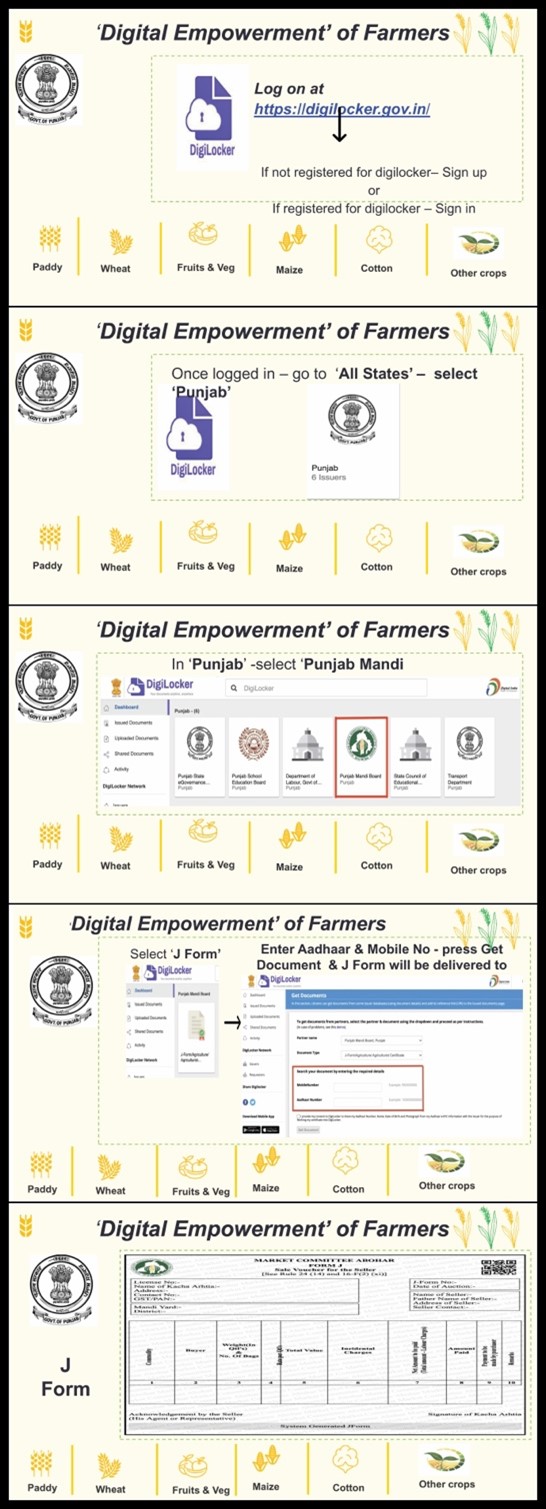
Source:
- Explained: What is the ‘J form’, and how will its digitisation help farmers in Punjab?
- Bhagwant Mann's government to provide digital J-forms to farmers across state from April 1
Image source:
Covid variant XE
- Context: As per the WHO (World Health Organisation), a Covid variant of mutation called XE has been recently found in the UK.
- This variant is believed to be more transmissible than any other Covid strain so far.
- XE is combination or recombinant of both sub-variants (BA.1 and BA.2) of Omicron.
- Recombinant strains emerge when two variants infect the same host cell and swap parts of their genome.
- According to WHO, the recombinant variant is believed to be 10% more transmissible than the BA.2 sub-variant of Omicron.
- The XE recombinant was first detected in the United Kingdom and more than 600 sequences have been reported and confirmed so far.

Source:
- More transmissible than Omicron: All you must know about new Covid variant XE
- Explained: New Covid Variant XE, Omicron’s more transmissible cousin
Image source:
Chetak helicopters
- Context: IAF’s oldest helicopter Chetakwill mark 60 years in action next month.
- Chetak helicopter is the oldest helicopter of the Indian Air Force inducted byHindustan Aeronautics Ltd (HAL) in 1965.
- It is atwo-tonne helicopter that has a maximum speed of 185kmph and a range of
- It is asingle-engine helicopter that can carry seven people, including two pilots.
- The Chetak is operated by each of the three services andalso the coast guard, however it has been military’s workhorse for decades.
- It has been used fortraining pilots at HTS, used for VIP flying, military operations, casualty evacuation, and relief missions.
- It has beeneasy to fly and maintain, it is versatility personified and every pilot’s favourite as it can be used for landing in restricted areas in diverse terrains and on warships.
- It is now due forreplacement along with the Cheetah helicopter fleet operated by the air force and the army.
Source:
- IAF celebrates 60 years of Chetak’s service to the nation
- IAF’s oldest helicopter Chetak to mark 60 years in action next month
Image source:
Tata Neu
- Context: Tata Group’s “Tata Neu” app is all set for launch.
- Tata Neu is Tata Group’s super app that brings together all of the company’s digital services and apps on a single platform.
- Various Tata Group digital services such as booking flight tickets on AirAsia India, Air India or booking hotels at Taj Group properties, ordering groceries from BigBasket, medicines from 1mg, or purchasing electronics from Croma will be possible through Tata Neu app.
- For spending on the app, the company will reward its users with Neu Coins that will be redeemable on the services being provided through the app.
- A country becomes super app-ready when a large base of its population is smartphone first instead of desktop, and the ecosystem of apps customised to local needs is not evolved.
- Apart from increased revenue realisation due to consolidation of services at one place, such apps also provide companies with large volume of consumer data which can then be harnessed to learn more about user behaviour.

Source:
- Explained: What is Tata Neu, the ‘super app’ set to launch on April 7?
- Tata Neu: All You Need To Know About Tata Group's Super App
Image source:
In 2022, let’s create gender-positive learning spaces: IE
Essence: Transgender students face several problems such as lack of gender-neutral accommodation, which leads to mental harassment and increased dropouts. There are incidents where students are asked to undergo sex reassignment surgery, going against the right to self-determination, as provided by the 2014 NALSA judgment of the Supreme Court. Thus, honest conversation with the students and faculty is needed to create gender-neutral space in hostels along with gender-neutral washrooms and policy on inclusive education for gender and sexual minorities.
However, such spaces should be mindful of the intersectionality within queer communities and should not curtail the legal right of transgender men and women to get accommodation in men’s or women’s hostels. This creation of infrastructure needs to be augmented with sensitisation campaigns to change mindsets, changing queerphobic curricula and inclusion of other queer identities to the National Education Policy 2020.
Why should you read this article?
- To understand the need to create gender neutral spaces in educational institutions.
- To understand the factors that need to be considered while creating such spaces.
- To know about further measures needed to create gender neutral educational institutions.
Source:
The road to Ukraine peace runs through Delhi: LM
Essence: The editorial speaks about the impacts of no-win situation, causes of the same, its impacts and the diplomatic way forward for the Russia- Ukraine crisis. Russian and Ukrainian economy have suffered a setback, inflation has skyrocketed, finances have curtailed, fuel and food supply chains disrupted, millions have been displaced and thousands killed during war. Negotiations have failed because both parties have focused on ‘positions’ rather than ‘interest’.
Mediation (assisted negotiations) could offer a flexible conflict resolution tool and be facilitated through a neutral third party like India. Mediation is a win-win situation as compared to arbitration that has a win-lose outcome. Mediation also avoids reactive stance/devaluation of discussions, and aids shuttle diplomacy to understand the leaders’ intention. An ethical question which arises is if mediation proceeds, will the war-crimes under Geneva convention be set aside and Russia’s actions legitimized or should one focus first on de-escalation of conflict.
European countries have come closer for a pragmatic security infrastructure for Europe. It must include Russia as a stakeholder- common security, common prosperity and peace. It is in India’s interest to prove its worth as ‘Vishwa-Guru’ (world leader), counter China, win the hearts of European nations and Russia alike through its astute diplomacy.
Why should you read this article?
- To know the concept of mediation and how it is a superior conflict resolution skill.
- To know the role that India could play in Russia-Ukraine conflict.
Source:
India’s zinc-trade deficit with Korea tells why we need industry input on deals: LM
Essence: Push for “atma-nirbhar" Bharat by the Government is facing a hurdle by another action of the government in the form of signing free trade agreements (FTAs) without proper due diligence. Author warns that given our past experience with FTAs, we should be careful to ensure that our market is not flooded with cheap imports which will end up hurting domestic industry. Increased zinc import to India after signing of FTA with Republic of Korea is a case in point, even though Korea has almost no Zinc mine. This raises questions related to Rules-of-Origin (RoO). Article concludes with a suggestion that issues related to Rules-of-Origin (RoO) should be addressed in future FTAs and domestic industry should be consulted before signing agreements.
Why should you read this article?
- To understand challenges related to signing of Free Trade Agreements without proper due diligence.
- To understand India’s zinc dependence on South Korea.
Source:
Pickled with Love
Background
- Covid 19 pandemic had enormous impact on the lives of people, from losing their dear ones to the disease to being financially handicapped.
- One of such victims of the pandemic is Usha Gupta. But she braved through the tough times with sheer determination and willingness.

About Pickled with Love
- The 88 year old, Delhi based Usha Gupta started her pickle initiative named Pickled with Love with the help of her granddaughter.
- During the second wave of the pandemic, Usha and her husband tested positive to Covid-19 and were hospitalised. Later, her husband died due to the illness.
- She was determined not to give up after the loss her companion of 63 years and moved ahead with sheer courage.
- Alarmed at what people had to go through amid the pandemic, the 88-year-old decided to work in order to alleviate the struggles of the sufferers.
- She started her pickle business where she sells homemade pickles and chutneys for raising funds for the ones in need.
Quote: “It’s when you’re acting selflessly that you are at your bravest.” Veronica Roth
Source:
Share the article
Get Latest Updates on Offers, Event dates, and free Mentorship sessions.

Get in touch with our Expert Academic Counsellors 👋
FAQs
UPSC Daily Current Affairs focuses on learning current events on a daily basis. An aspirant needs to study regular and updated information about current events, news, and relevant topics that are important for UPSC aspirants. It covers national and international affairs, government policies, socio-economic issues, science and technology advancements, and more.
UPSC Daily Current Affairs provides aspirants with a concise and comprehensive overview of the latest happenings and developments across various fields. It helps aspirants stay updated with current affairs and provides them with valuable insights and analysis, which are essential for answering questions in the UPSC examinations. It enhances their knowledge, analytical skills, and ability to connect current affairs with the UPSC syllabus.
UPSC Daily Current Affairs covers a wide range of topics, including politics, economics, science and technology, environment, social issues, governance, international relations, and more. It offers news summaries, in-depth analyses, editorials, opinion pieces, and relevant study materials. It also provides practice questions and quizzes to help aspirants test their understanding of current affairs.
Edukemy's UPSC Daily Current Affairs can be accessed through:
- UPSC Daily Current Affairs can be accessed through Current Affairs tab at the top of the Main Page of Edukemy.
- Edukemy Mobile app: The Daily Current Affairs can also be access through Edukemy Mobile App.
- Social media: Follow Edukemy’s official social media accounts or pages that provide UPSC Daily Current Affairs updates, including Facebook, Twitter, or Telegram channels.


